Math 6.3
Number and operations. The student applies mathematical process standards to represent addition, subtraction, multiplication, and division while solving problems and justifying solutions. The student is expected to:
(A) recognize that dividing by a rational number and multiplying by its reciprocal result in equivalent values;
(B) determine, with and without computation, whether a quantity is increased or decreased when multiplied by a fraction, including values greater than or less than one;
(C) represent integer operations with concrete models and connect the actions with the models to standardized algorithms;
(D) add, subtract, multiply, and divide integers fluently; and
(E) multiply and divide positive rational numbers fluently.
- Free Plan
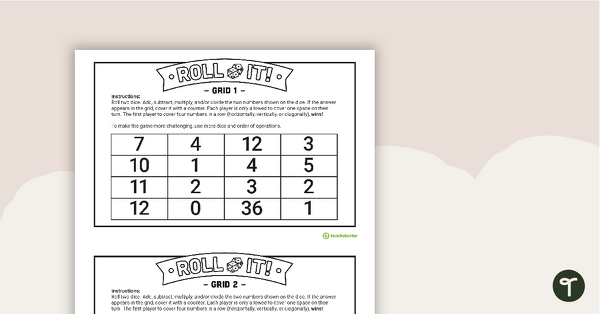
Roll It! Operations Game
Use this fun game to practice all four operations and/or order of operations.
- Free Plan
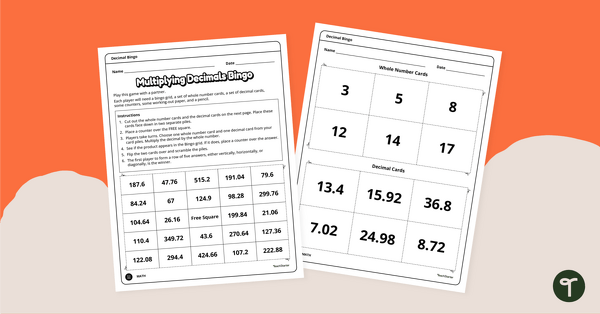
Multiplying with Decimals Bingo Game
Get your students multiplying decimals by whole numbers with this engaging Bingo game.
- Plus Plan
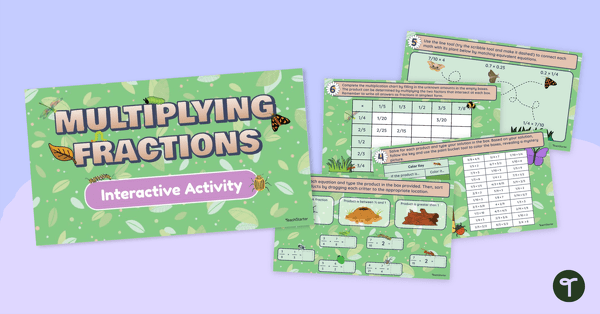
Multiplying Fractions – Google Slides Interactive Activity
Challenge your students to multiply fractions while completing 7 different tasks with this Google slides interactive activity.
- Plus Plan
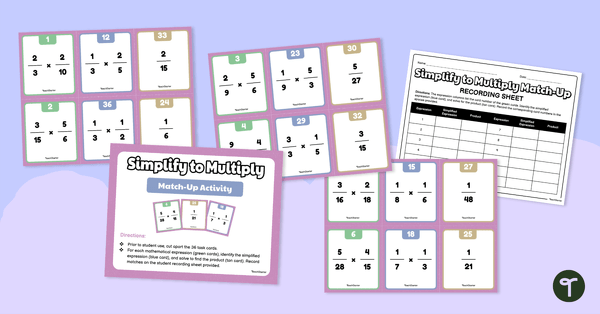
Simplify to Multiply – Multiplying Fractions Match-Up Activity
Practice simplifying before multiplying fractions with this match-up activity.
- Free Plan

Multiplying Mixed Numbers – Word Problem Worksheet
Solve a variety of word problems with this multiplying mixed numbers worksheet.
- Plus Plan
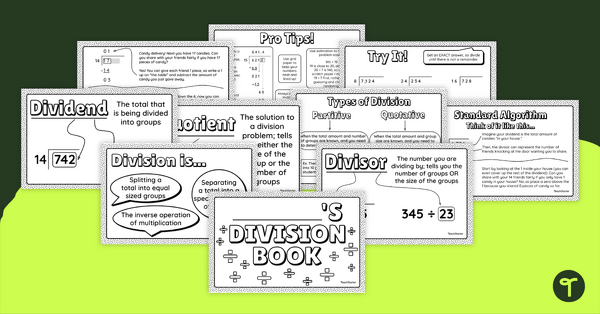
Long Division Mini-Book
Learn how to use the standard algorithm for division when dividing by double-digit divisors with this mini-book.
- Free Plan
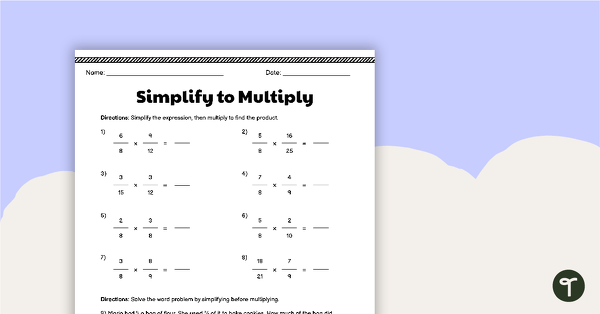
Simplify to Multiply – Multiplying Fractions Worksheet
Practice how to simplify fractions before multiplying with this worksheet.
- Plus Plan
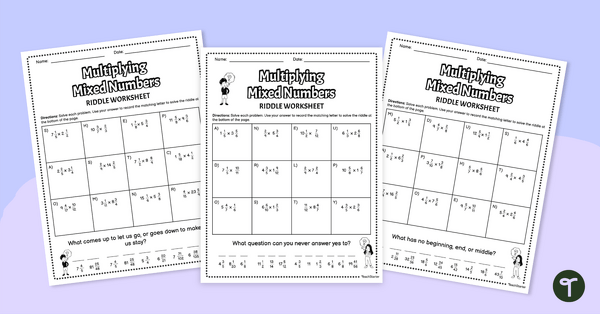
Multiplying Mixed Numbers – Riddle Worksheets
Multiply mixed numbers to reveal the answer to a joke with this set of 3 riddle worksheets.
- Plus Plan
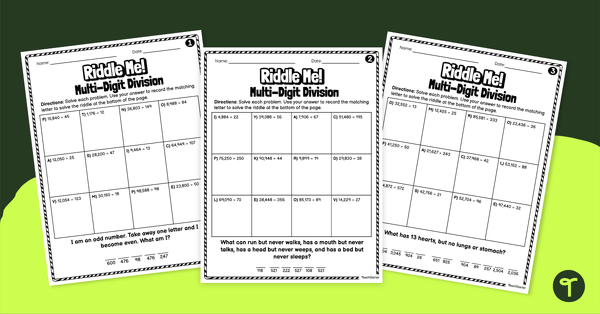
Multi-Digit Division Riddles – Worksheet
Have fun solving multi-digit division problems with this set of 3 riddle worksheets.
- Plus Plan

Long Division Strategy Posters
Use this set of 4 posters when teaching different long division strategies.
- Free Plan
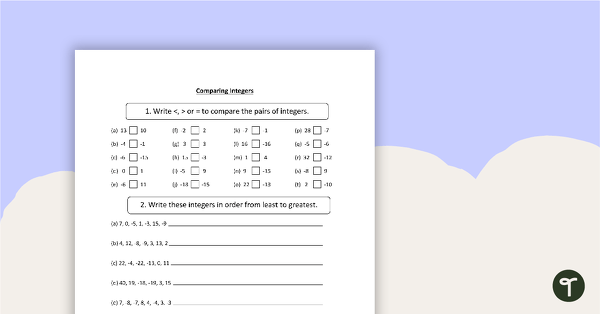
Positive and Negative Numbers - Worksheet
A set of worksheets to use when learning about positive and negative numbers.
- Free Plan
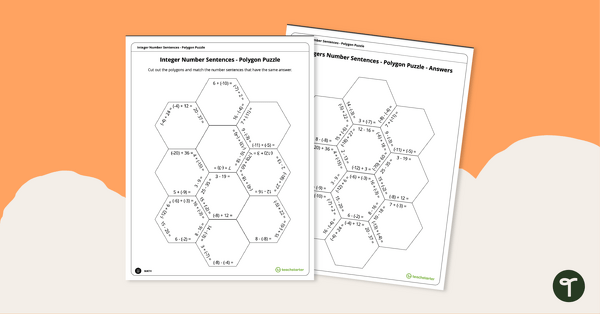
Integer Number Sentences - Tarsia Puzzle
Practice solving addition and subtraction number sentences involving integers with a printable Tarsia puzzle!
- Plus Plan
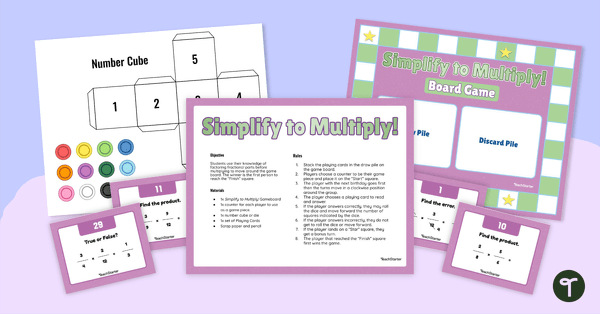
Simplify to Multiply – Multiplying Fractions Board Game
Practice how to simplify fractions before multiplying with this board game.
- Plus Plan
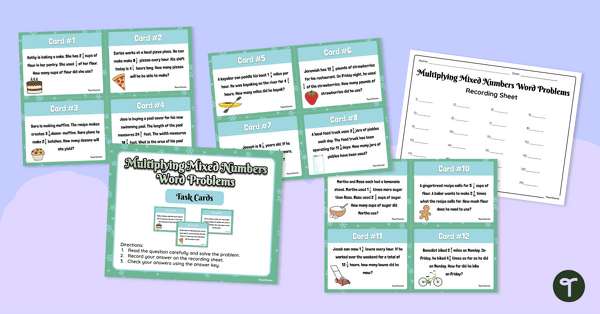
Multiplying Mixed Numbers – Word Problem Task Cards
Improve understanding of how to multiply mixed numbers with this set of 24 word problem task cards.
- Plus Plan
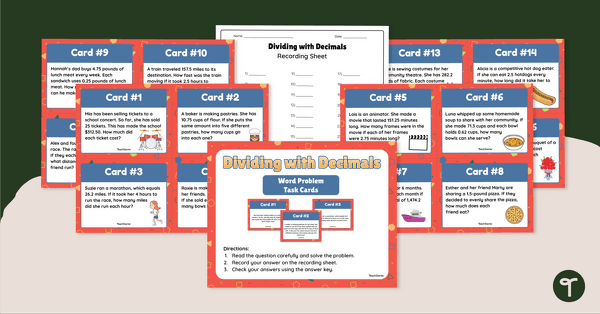
Dividing with Decimals – Word Problem Task Cards
Sharpen decimal division skills while solving a variety of word problems with this set of 24 task cards.
- Plus Plan
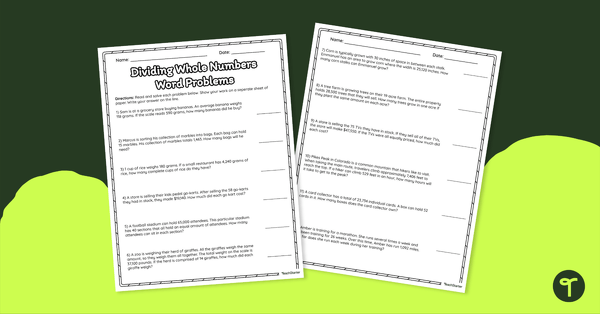
Dividing Whole Numbers – Word Problem Worksheet
Sharpen computation skills by solving a variety of long division word problems with multi-digit divisors.
- Plus Plan
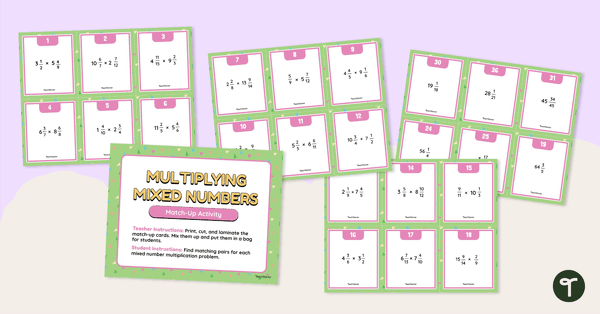
Multiplying Mixed Numbers – Match-Up Activity
Strengthen student understanding of how to multiply mixed numbers with this match-up activity.
- Free Plan
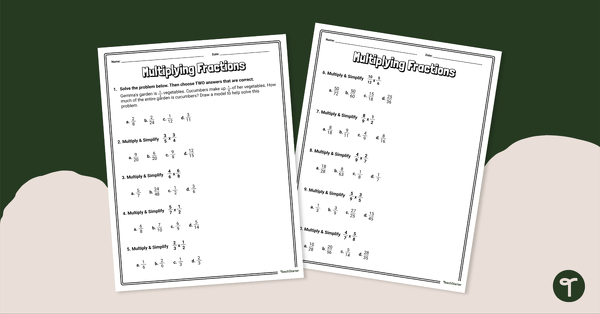
Multiplying Fractions Worksheet
A worksheet to practice multiplying and simplifying fractions.
- Plus Plan
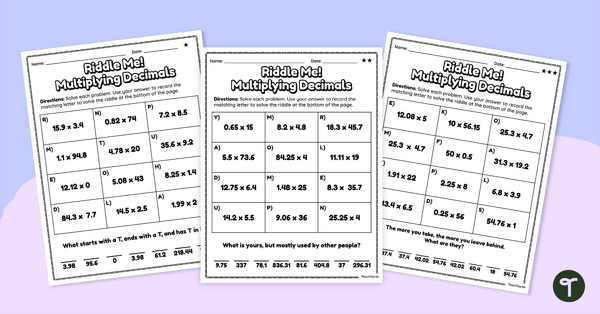
Multiplying Decimals – Riddle Worksheets
Get students solving decimal multiplication problems with this set of 3 differentiated riddle worksheets.
- Free Plan
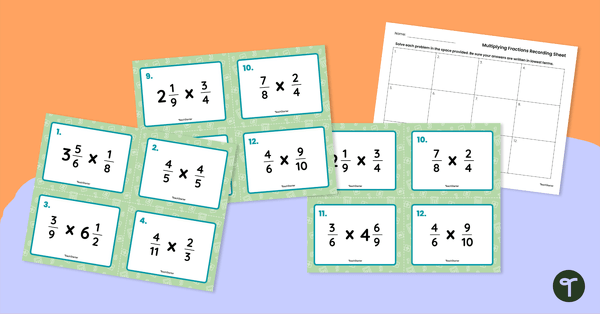
Multiplying Fractions Task Cards
Practice multiplying fractions with a set of 12 task cards.
- Plus Plan

Dividing Whole Numbers – Color by Number Worksheet
Solve long division problems and color the grid according to the key to reveal a mystery picture.
- Plus Plan
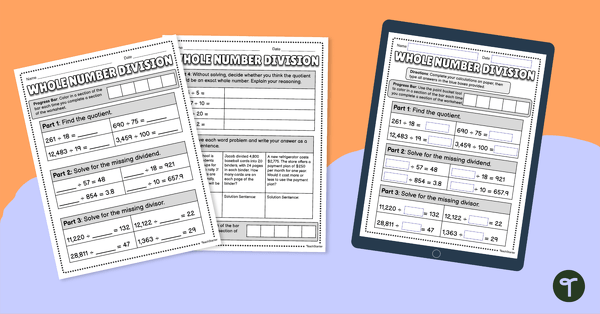
Whole Number Division – Digital and Printable Worksheet
Use this digital or printable worksheet to sharpen long division skills by finding quotients, missing dividends, and missing divisors.
- Plus Plan
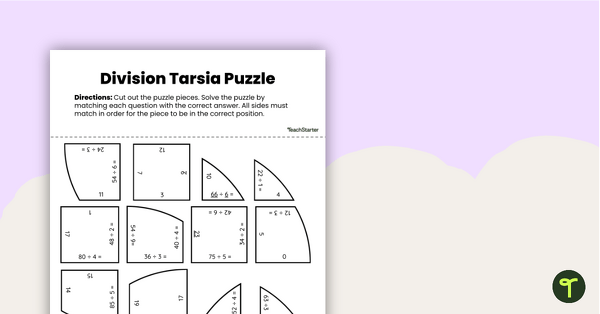
Dot Day Division Tarsia Puzzle
Practice dividing two-digit by one-digit numbers with a Dot Day tarsia puzzle.
- Plus Plan
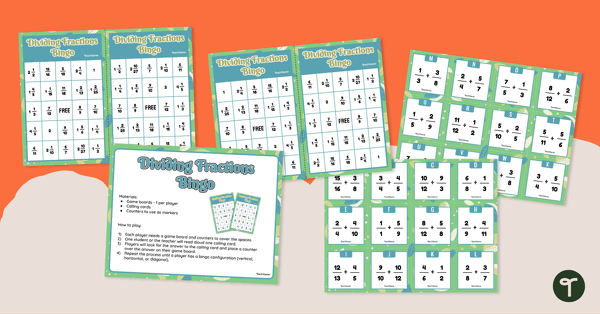
Dividing Fractions Bingo
Master the ability to divide fractions with a whole-class bingo game.
- Plus Plan
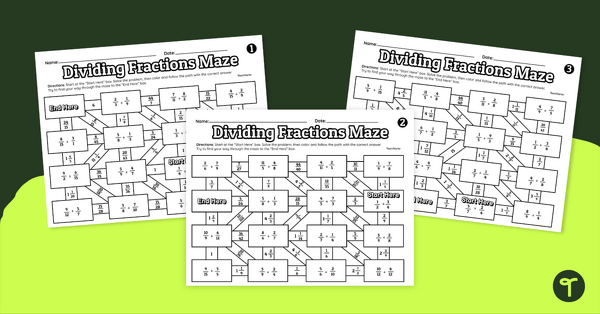
Dividing Fractions – Math Mazes
Improve student understanding of dividing a fraction by a fraction while working through these 3 math mazes.
- Plus Plan
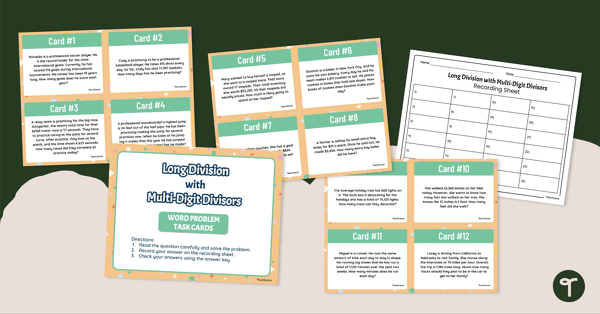
Long Division with Multi-Digit Divisors – Word Problem Task Cards
Use long division to solve a variety of word problems with this set of 24 task cards.
- Plus Plan
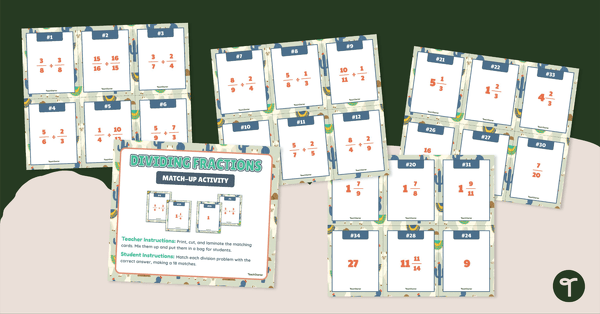
Dividing Fractions – Match-Up Activity
Reinforce how to divide a fraction by a fraction with this printable match-up activity.
- Plus Plan
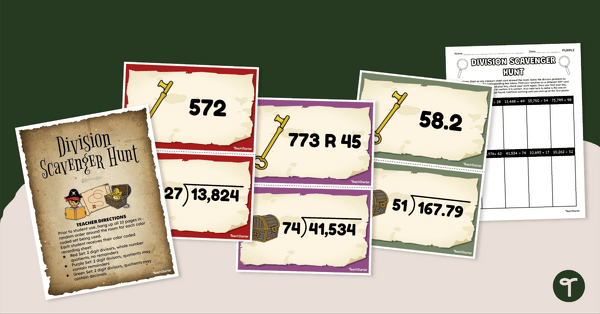
Division Scavenger Hunt
Practice long division with whole numbers and decimals with this differentiated activity.
- Plus Plan
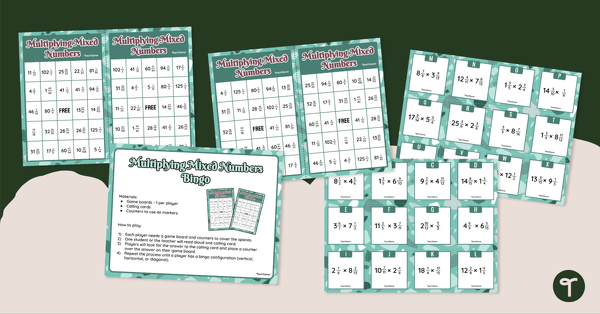
Multiplying Mixed Numbers Bingo
Master the ability to multiply mixed numbers with a whole-class bingo game.
- Plus Plan
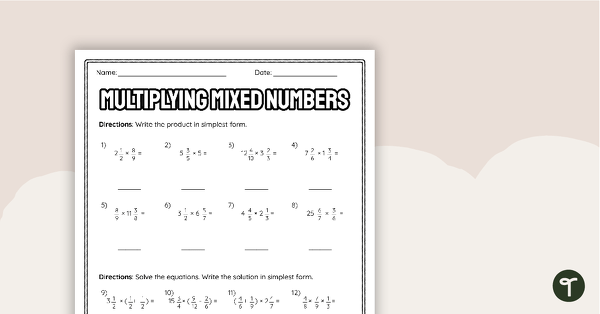
Multiplying Mixed Numbers – Worksheet
Strengthen student understanding of fractional operations with this multiplying mixed numbers worksheet.
- Free Plan
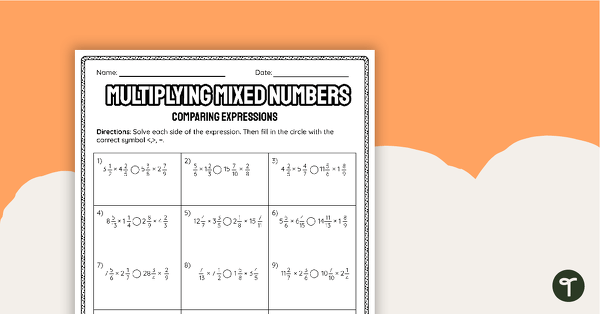
Multiplying Mixed Numbers – Comparing Expressions Worksheet
Review how to multiply mixed numbers with this comparing expressions worksheet.
- Plus Plan
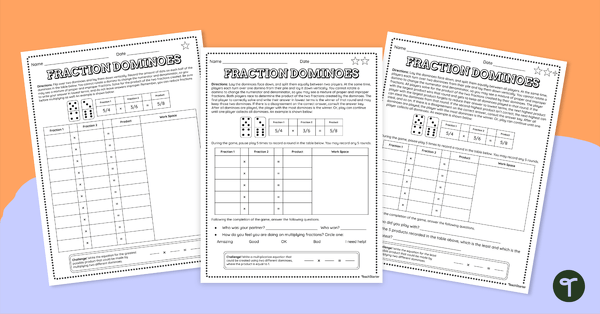
Multiplying Fractions – Domino Games
Engage students with a dominoes game while practicing how to multiply fractions.